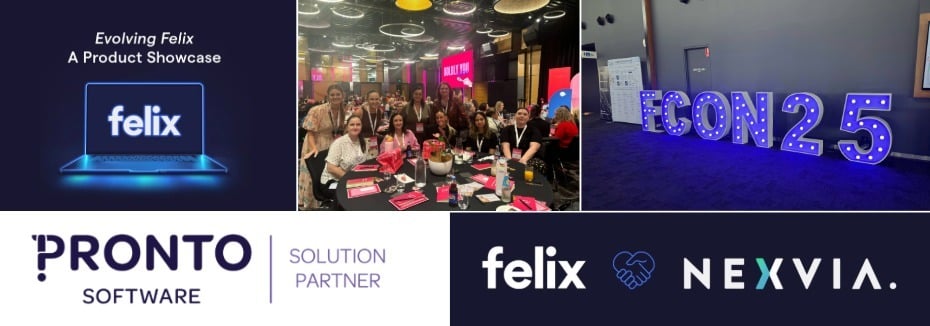Our previous post taking inspiration from the Ever Given saga, touched on some tips to build a business case for procurement software. No matter what job title you have, chances are you’ve already known you need a solution, now it’s just a matter of convincing others to share your vision.
Let’s get into the nitty-gritty of structuring your business case. Here, we would analyse things and write using 3 frames of reference.
To get buy-in and lay a foundation for change management down the road, it’s crucial to air it all out for internal stakeholders. So the first frame of reference is:
- What they are getting
- Why they should care or how it will be benefiting them
- What they need to do to help get the project off the ground
Closely related to the first, this second frame of reference looks at the concrete touchpoints those stakeholders will have with the new system.
In other words, this is about how stakeholders interact with the procurement solution:
- Vendor information
- Vendor engagement/performance
- Processes & operations
- Financial performance or analytics
When putting together the business case for procurement software, it’s also worth linking it back to the importance of procurement as a function itself. Hence, the third frame of reference is basically about demonstrating how the tool would help procurement deliver benefits to the wider business.
Based on Deloitte’s latest research of CPOs around the world, these metrics are expected from procurement:
- Cost savings
- Cost avoidance
- Cash improvements
- Internal stakeholder satisfaction
- Labour efficiency
- Risk management
- Vendor performance
- Sustainability/diversity
- Revenue uplift
- Innovation enablement
[We’ve also recently summarised the highlights of Deloitte’s annual CPO report here]
In the next section, we’ll attempt to fill in the key points to “sell” to various internal stakeholders, using the 3 frames of reference above.
Want to download the playbook for reference later? Click below
C-level executives
While not on the tools daily, this group definitely has a lot of sway, and can often be budget holders or approvers. By getting them on your side as a “project sponsor”, your chances of getting buy-in from other groups increases.
What do they care about?
- Headline items: risk management (reputation, director and senior management’s liability), financial performance, revenue, cost savings.
Your job is to translate those high- level items of interest into concrete, bite-sized benefits to be delivered by the procurement system. Examples:
|
Functionality/feature |
Benefit group |
Related headline item |
|
Audit trail |
Ensure procurement and process governance is adhered to |
Risk management: line of defence |
|
Automated compliance management |
Ensure no non-compliant vendor is engaged |
Risk management: director’s liability |
|
Streamlined processes |
Reduce cost to manage vendors at scale |
Financial performance: improved margins |
|
Vendor database with segmentation and tags |
Meet CSR and ESG targets |
Sustainability / diversity |
Finance
While the CFO’s perspective in the C-level execs group above can also be tied to this, there are more nuances to consider for the finance team.
By default, having a system to capture all vendor-related information as well as your organisation’s engagements with them would make it easier for finance to ensure cash flows to the right places. Let’s demonstrate with a few examples:
|
Functionality/feature |
Benefit group |
Related headline item |
|
Spend data and vendor engagements |
Spend visibility throughout supply chain |
Cash improvement |
|
Vendor payment details, rates, contract, terms |
Payment optimisation and security |
Cash improvement, cost avoidance (fraud) |
|
Streamlined processes |
Reduce admin cost for manual processes |
Cost savings |
Commercial
Closely linked with finance, the project-based nature of work in industries such as construction, mining, utilities means each project is like its own entity with its own cash flows and supply chain.
As procurement is a critical part in ensuring commercial success, the commercial team need to have visibility and the ability to collaborate on key decisions, e.g. selecting the right third-parties.
|
Functionality/feature |
Benefit group |
Related headline item |
|
Vendor selection and performance evaluation |
Optimal project delivery
|
Vendor performance and revenue uplift
|
|
Contracts storage and alerts |
Reduce maverick spend or unnegotiated renewal |
Cost avoidance and risk management |
|
Streamlined RFx processes |
Reduce admin cost for manual processes, avoid project delays |
Cost savings and cost avoidance |
IT
A lot has been said about involving IT earlier rather than later in a digital procurement initiative. Why? IT knows far too well the challenges and implications surrounding any new piece of software being purchased.
We’ve previously discussed some of those points, which if left too late to address, could hinder tech adoption for procurement.
|
Functionality/feature |
Benefit group |
Related headline item |
|
Role-based permission for different features |
Secure access to the tool any time anywhere |
Internal stakeholder satisfaction |
|
Short implementation cycle |
Freed up IT resources |
Labour efficiency |
|
Integration with other corporate systems |
Tech stack that doesn’t require excessive maintenance and can scale |
Innovation enablement |
HSEQ
These are the subject matter experts that monitor all the health, safety, environment and quality of projects. Since vendors are needed to deliver a significant part, procurement can facilitate the due diligence process with input from HSEQ.
|
Functionality/feature |
Benefit group |
Related headline item |
|
Vendor onboarding and approval |
Ensure vendors' compliance to policies |
Risk management and internal stakeholder satisfaction |
|
Vendor segmentation |
Allocate resources to manage different types accordingly |
Labour efficiency |
|
Vendor evaluation and history |
Minimise future issues |
Vendor performance |
|
Requalification |
Ensure new requirements are captured across vendor pool |
Risk management |
Legal / GRC
New legislations and regulatory updates can affect how organisations interact with their supply chains. In recent years, a focus on Modern Slavery, industrial manslaughter, social procurement etc. has added pressure to ensure compliance.
Compliance also comes with a cost. You can get buy-in from Legal by looking at it from 2 angles:
- Reducing cost to comply
- Avoiding non-compliance cost
|
Functionality/feature |
Benefit group |
Related headline item |
|
Up-to-date vendor database |
Risk visibility across supply chain |
Risk management |
|
Standardised prequalification |
Compliance at scale |
Labour efficiency |
Operations
Closely linked with HSEQ, the operations team are on the ground ensuring things go according to plan. They also take part in the planning and pre-construction work. Hence, the ability to facilitate seamless input collection would be key for procurement.
|
Functionality/feature |
Benefit group |
Related headline item |
|
Rapid and strategic sourcing |
Enable decentralised procurement activities to meet project needs fast |
Labour efficiency and internal stakeholder satisfaction |
|
Integrated vendor onboarding |
Ensure vendors are compliant before being on-site |
Risk management |
|
Performance evaluation and history |
Inform future decision making for all stakeholders |
Vendor performance
|
Vendors
Too often, we forget this is a two-way street. Third-party vendors, subcontractors and suppliers are also partners. Their success or failure could have a direct impact on organisations’ bottom line.
While vendors don’t normally provide input into which procurement tool their client uses, considering their needs in the software selection process can help drive adoption later.
|
Functionality/feature |
Benefit group |
Related headline item |
|
Guided onboarding |
Onboarding process tailored to type and risk profile |
Cost savings |
|
Self-service capabilities |
Freed up admin resources |
Labour efficiency |
|
Streamlined RFx process |
Transparency, equal opportunities |
Innovation enablement |
In summary
This article aims to provide a starting point for you to get the buy-in you need from multiple stakeholders by being in their shoes.
Each company and role will be slightly different, but the broad categorisation of stakeholder needs would be largely the same.
Be sure to check out the latest Procurement Software Buyer’s Guide for more useful content that can help you in this process.

Recent Articles
2025 in review: Milestones, insights and achievements
2025 – a year of that brought meaningful developments for Felix as we continue to address the evolving needs of organisations navigating complex supply-chain environments.
Top 10 reasons for a centralised vendor database
As organisations grow, so does the complexity of managing vendor relationships. Many still rely on spreadsheets or siloed systems, which can lead to inefficiencies, data inconsistencies, and compliance risks. A centralised vendor database offers a smarter, more scalable solution that brings structure, visibility, and control to procurement operations.
Here are the top 10 reasons why centralising your vendor data is a strategic move.
Five ways poor contract storage could be costing your organisation money
Contracts are the backbone of every business relationship – legally binding documents that define expectations, responsibilities, and value.
But what if the way your organisation stores those contracts is quietly costing you money?
Let's stay in touch
Get the monthly dose of supply chain, procurement and technology insights with the Felix newsletter.







